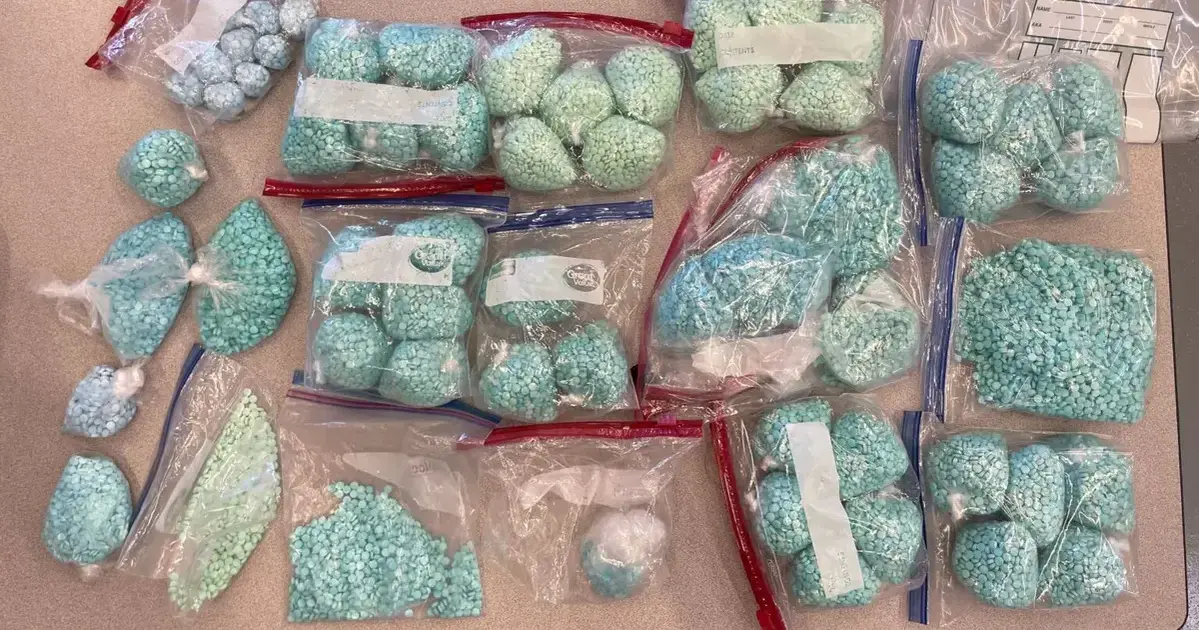
But the program, intended to help people in drug addiction, allows them to successfully complete deflection and avoid court charges without necessarily accessing treatment .
More than 90 people in Multnomah County entered a new program intended to help Oregonians who use illicit drugs avoid possession charges in court and receive treatment instead.
The figure for Oregon’s largest county provides the best available picture of how the new deflection program, which started Sept. 1, is aiding the Portland region’s fight against fentanyl-fueled drug addiction. But it’s also an incomplete picture, one that doesn’t yet show how successful the new program will be or whether the 91 people will receive addiction treatment or other aid, such as referrals to housing assistance or a homeless shelter.
In a Thursday press conference , Multnomah County officials repeatedly underscored the newness of the program and the ongoing plans to track more data on people entering and completing the program in the months ahead.
“We have learned a lot about how the program is working for participants, yet it will be a few months before we have enough data to fully understand the outcomes that the program is achieving and its longer term impacts,” Multnomah County Health Director Rachael Banks said.
The crisis remains widespread, from rural Oregon to Portland.
About 1,400 people died of fentanyl overdoses statewide in 2023, up from just 280 in 2019, Oregon Health Authority data show. Across Oregon, 28 of the state’s 36 counties agreed to start deflection programs through House Bill 4002, which lawmakers passed this year to combat drug addiction.
The legislation put a new misdemeanor penalty in place that recriminalized low-level drug possession in response to rising overdoses. The law also allowed, but did not require, counties to start the deflection programs, which provide a pathway for a person to avoid court charges and jail time if they participate. Counties received the flexibility to design their deflection programs — and the requirements for someone to succeed.
How it works
In Multnomah County, participants can successfully complete the program if they complete a screening after contact with a police officer, receive a referral to services and engage with a recommended provider within 30 days. Those who do not do the followup face possible arrest and charges.
That doesn’t necessarily mean that they all will start treatment within 30 days. It could mean other steps, like accessing housing or related services, county officials said.
“If shelter or housing were in their care plan and they accessed one of those things, it would be a successful deflection,” said Marc Harris, the Multnomah County Health Department’s strategic initiatives manager.
The program’s flexible arrangement comes as Oregon struggles to provide enough addiction treatment services statewide, whether for outpatient services or residential care. Oregon is short by 3,700 beds for residential mental health care or addiction services, a state report found.
Yet officials also point to signs of promise on the horizon. 4D Recovery, a nonprofit addiction recovery provider in the Portland region, recently opened an outpatient treatment center in Gresham. The organization also contracts with Multnomah County and provides outreach services to aid police officers in the field.
Tony Vezina, executive director of 4D, said the center will aid efforts in the eastern portion of the county and did six assessments for new clients on Tuesday, its first day.
As to the program’s setup and the role of treatment, Vezina said everyone has the same goal for people to get as much help and treatment as possible, which continues after that first month and completion of the program.
“It wouldn’t mean that the help would stop at that point,” Vezina said.
The county also has a contracted drop-in center where police can take people who may decide to participate in deflection for initial screenings and connections to peer mentors. The Pathway Center, run by Tuerk House, a Baltimore-based drug and alcohol treatment provider, opened in mid-October at 900 SE Sandy Boulevard in Portland’s central eastside district.
From Oct. 14, to Oct. 31, the center has received 19 referrals from law enforcement for possible deflection cases. Out of those, 13 people started deflection.
“We are encouraged by the response from participants and their willingness to seek treatment,” said Tuerk House CEO Bernard Gyebi-Foster in a statement.
There are plans to expand the center in 2025 with sobering services.
Overall, arrests on the misdemeanor drug possession charge outpace the number of people who enter deflection. In Multnomah County, police agencies countywide have made 262 arrests for misdemeanor possession of a controlled substance since Sept. 1, according to Oregon Criminal Justice Commission data.
Not all of those people are eligible for deflection. If they face additional charges or have an arrest warrant from a prior case, they do not qualify.
Still, police and health officials point to individual success stories.
Portland Police Bureau Commander Brian Hughes told one account of a woman who started deflection. In that instance, an officer spotted an unsheltered woman smoking methamphetamine from a pipe near a popular coffee shop. The officer connected the woman to help, Hughes said, aiding public safety and her well-being.
